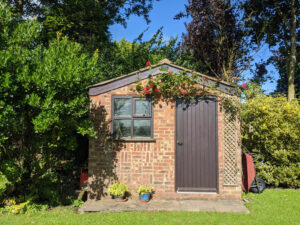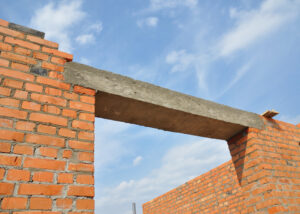Are you dealing with a pesky woodworm infestation and looking for a natural, non-toxic alternative for treatment? Look no further! In this article, I will explore the effectiveness of using vinegar as a solution for woodworm treatment.
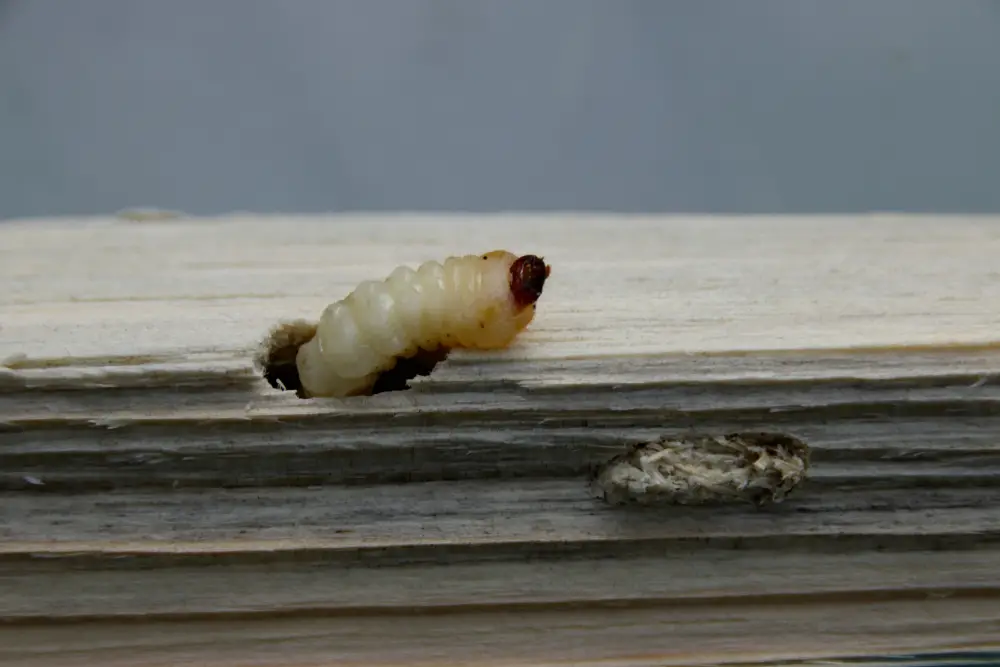
Vinegar, known for its versatility in cooking and cleaning, can also be used as a deterrent for wood-boring pests like woodworms. Although it won’t actually kill the woodworms, vinegar can make their stay quite uncomfortable. The acidity of vinegar is unpleasant for these bugs, forcing them to vacate the infested wood.
To utilize vinegar as a treatment, simply mix it with water in a 1:1 solution and spray it onto the affected area. This method can be particularly effective for non-structural wood items, such as furniture or wooden pieces like pianos. If you notice woodworm larvae exiting the wood, you can easily vacuum them up.
While vinegar treatment alone may not be enough to completely eradicate woodworm infestations, it can be a helpful addition to other methods. In severe cases, steam treatments or chemical treatments may be necessary to kill the larvae and prevent further infestation.
Remember, prevention is key! Properly ventilating your space, controlling moisture levels, and treating susceptible wood surfaces can help avoid future woodworm infestations. So, give vinegar a try for a natural and eco-friendly approach to treating woodworms!
Identifying and Preventing Woodworm Infestations
Woodworm infestations can cause significant damage to wooden structures, making it essential to identify and prevent these pests from wreaking havoc. By recognizing the signs of woodworm infestations and implementing preventive measures, you can safeguard your wooden belongings and minimize the risk of further damage.
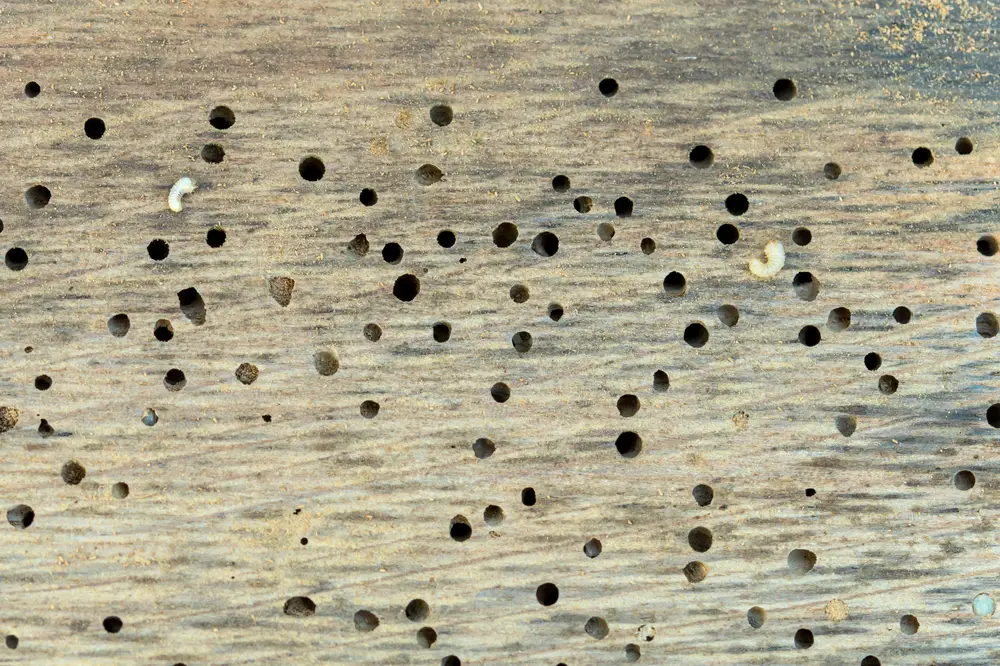
Signs of Woodworm Infestations:
1. Small Exit Holes: Woodworm beetles create tiny holes in the wood as they emerge from their larval stage. These holes are usually around 1-2mm in diameter and can be easily spotted on the surface of wooden furniture or structures.
2. Powdery Sawdust: A common indicator of woodworm infestations is the presence of powdery sawdust or frass around the exit holes. The beetles excrete this dust while burrowing through the wood, leaving behind visible traces.
3. Weakened or Crumbly Wood: Infested wood may exhibit signs of weakness or crumbliness, especially near the exit holes. This deterioration occurs due to the larvae feeding on the wood, causing structural damage over time.
Preventing Woodworm Infestations:
1. Maintain Proper Ventilation: Woodworm beetles thrive in damp and poorly ventilated environments. Ensure adequate airflow and ventilation in areas where wooden items are stored or installed to discourage infestations.
2. Control Moisture Levels: Moisture is a key factor that attracts wood-boring beetles. Regularly inspect and address any sources of dampness in your home, such as leaking pipes or condensation, to prevent woodworm infestations.
3. Treat Susceptible Wood Surfaces: Applying a woodworm treatment solution, such as boron-based or permethrin-based treatments, can help protect susceptible wood from infestation. These treatments act as a deterrent for wood-boring beetles, reducing the likelihood of an infestation.
| Wood-Boring Beetle | Preferred Wood Type |
|---|---|
| Common Furniture Beetle | Softwood and hardwood |
| Death Watch Beetle | Hardwood, particularly oak |
| House Longhorn Beetle | Softwood, particularly pine |
| Powder Post Beetle | Hardwood, such as oak and ash |
Knowing the specific beetle species involved in the infestation can help tailor your preventive measures and treatment options accordingly. If you suspect a woodworm infestation or require assistance in identifying the beetles, it is advisable to consult a professional woodworm specialist for expert advice and guidance.
By being vigilant and proactive in identifying and preventing woodworm infestations, you can protect your wooden belongings and ensure their longevity. Remember to regularly inspect wooden items, implement preventive measures, and seek professional assistance when needed to effectively combat woodworm infestations.
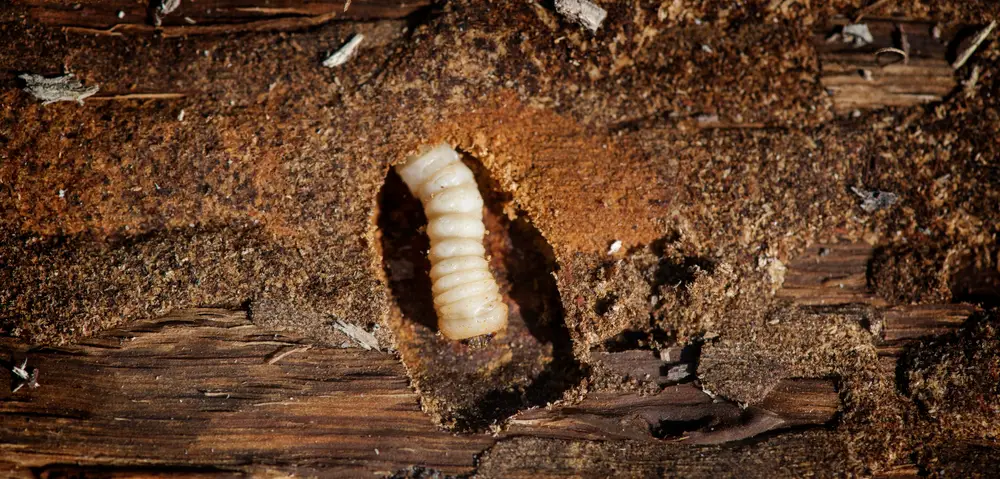
Professional Woodworm Treatments and DIY Methods
When it comes to treating woodworm infestations, there are both professional and DIY methods that can be effective. For minor infestations, DIY treatments can be a cost-effective option. One popular DIY method is using a boron-based or permethrin-based woodworm treatment solution. These solutions can be easily applied by spraying or brushing onto the infested wood surfaces.
However, it is important to note that DIY treatments may not penetrate deep into the wood and may only kill adult beetles, leaving the larvae unaffected. As a result, repeated treatments may be necessary to fully eliminate the infestation. It is also worth mentioning that DIY methods are more suitable for minor infestations and should not be relied upon for severe infestations or structural damage.
In cases of severe infestations or when structural damage is present, it is recommended to consult a professional woodworm treatment company. These professionals have the expertise, tools, and experience to assess the extent of the damage and determine the most appropriate treatment method. Professional treatments may include chemical treatments, timber replacement, or structural repairs, depending on the severity of the infestation.
In summary, DIY methods can be effective for minor woodworm infestations, but they may require repeated treatments and may not fully eliminate the larvae. Professional woodworm treatments are recommended for severe infestations or structural damage. It is important to weigh the pros and cons of each method and choose the most suitable approach based on the severity of the infestation and the desired outcome.
| Treatment Method | Pros | Cons |
|---|---|---|
| DIY Methods | – Cost-effective – Can be used for minor infestations – Easy to apply | – May require repeated treatments – May not fully eliminate larvae – Limited effectiveness for severe infestations or structural damage |
| Professional Treatments | – Expert assessment and treatment – Effective for severe infestations or structural damage – Wide range of treatment options | – Higher cost – Requires professional assistance |
Conclusion
After exploring various treatment options for a woodworm infestation, it is clear that vinegar can offer a temporary solution by forcing the woodworms out of the infested wood. However, it is important to note that vinegar alone cannot completely eliminate the infestation, as it does not kill the woodworm larvae.
For a more thorough and effective eradication of woodworms, it is recommended to seek professional treatment. Professionals have the expertise and resources to assess the extent of the damage and determine the most suitable treatment method. Options may include chemical treatments or structural repairs to ensure long-term eradication of woodworms.
While DIY methods, such as spraying boron-based or permethrin-based treatments, can be used for minor infestations, they may not penetrate deep into the wood and may require repeated treatments. Identifying the specific beetle species involved in the infestation is crucial for selecting the appropriate treatment.
Prevention is key to avoiding future woodworm infestations. Proper ventilation, moisture control, and treating susceptible wood surfaces can significantly reduce the risk of infestation. By taking proactive measures, you can protect your wooden structures and furniture from woodworm damage.
FAQ
Can vinegar kill woodworms?
No, vinegar cannot kill woodworms. However, it can force them out of the wood by creating an unpleasant environment for them.
How do I use vinegar to treat woodworms?
Mix vinegar with water in a 1:1 solution and spray it on the affected area. This can help in forcing the woodworms out of the infested wood.
Can I vacuum up woodworm larvae that come out of the wood after using vinegar?
Yes, if you see woodworm larvae exiting the wood, you can vacuum them up. However, vinegar treatment alone is not enough to completely get rid of woodworm infestations.
What are the signs of a woodworm infestation?
Signs of a woodworm infestation include small exit holes in the wood, powdery sawdust around the holes, and weakened or crumbly timber.
Are DIY methods effective for treating woodworm infestations?
DIY methods can be used for minor infestations, but they may require repeated treatments and may not penetrate deep into the wood. Consulting a professional is recommended for severe infestations or structural damage.
What can I do to prevent woodworm infestations?
To prevent woodworm infestations, maintain proper ventilation, control moisture levels, and treat susceptible wood surfaces. This can help in reducing the risk of infestation.
- Drill Battery Maintenance: Essential Tips for Cordless Drill Battery Care - February 5, 2024
- Troubleshooting Drill Issues - February 5, 2024
- Quick Drilling Techniques - February 2, 2024

